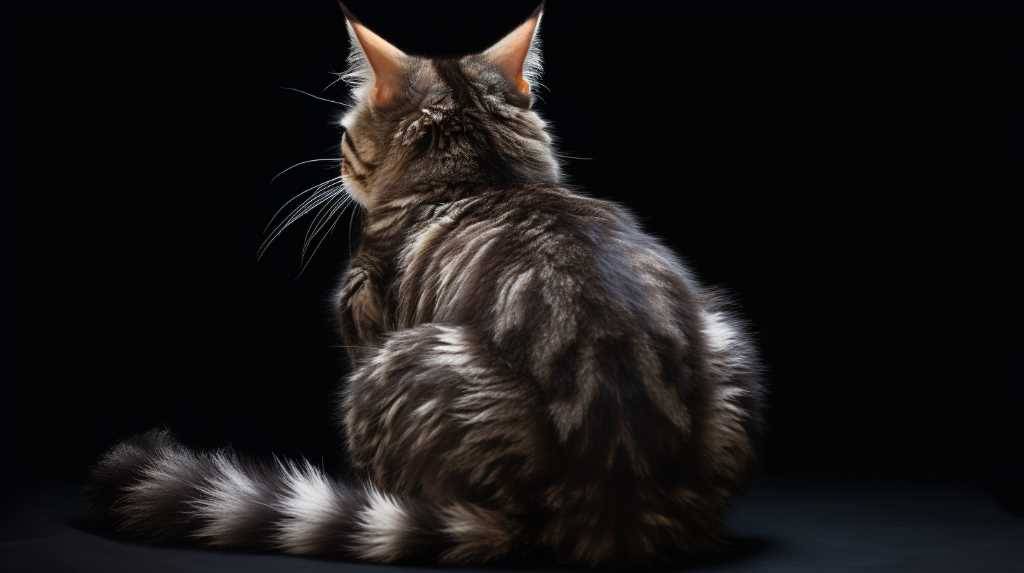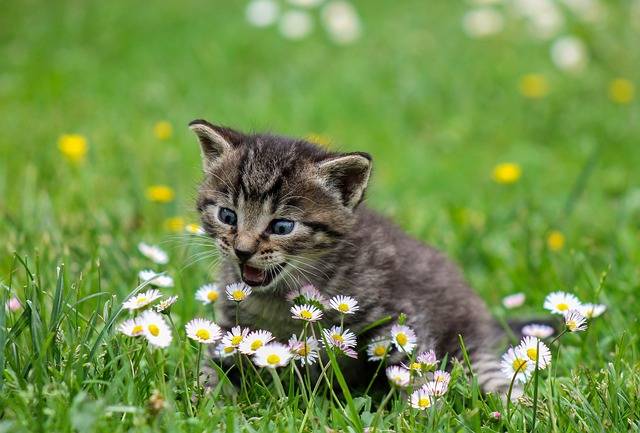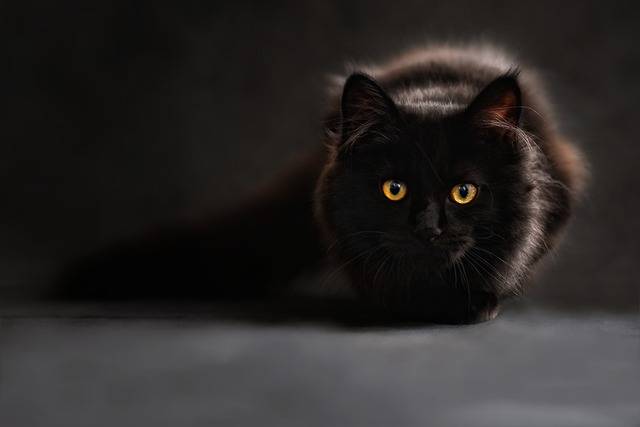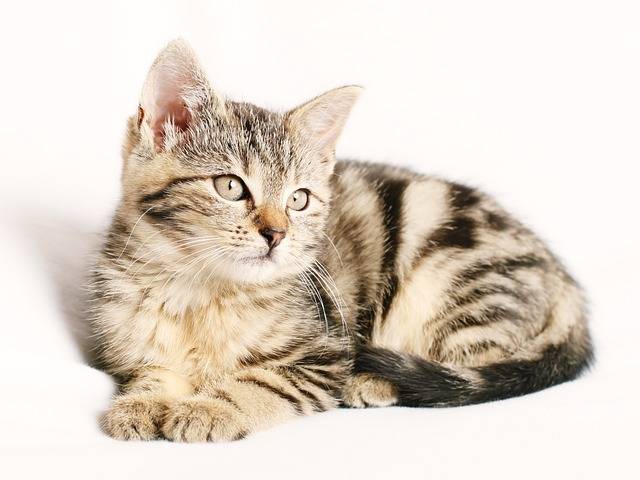cats
Why Do Cats Arch Their Backs? Decoding Feline Gestures

Why Do Cats Arch Their Backs? Decoding Feline Gestures
Have you ever wondered why your cat arches its back?
In this article, we will explore the fascinating world of cat communication and decipher the meaning behind this peculiar behavior.
Cats use various body language cues, such as tail movements, ear positioning, and whisker placement, to express their feelings and intentions.
By understanding these gestures, you can deepen your bond with your feline companion and become fluent in the language of cats.
Let’s unravel the mystery of back arches together and gain insight into our furry friends’ behavior.
Key Takeaways
Understanding how cats communicate through gestures and body language can provide valuable insights into their emotions. Some may argue that decoding these gestures is unnecessary, but it’s important to recognize that cats have their own unique ways of expressing themselves as sentient beings.

By paying attention to signals such as arched backs, tail movements, ear positioning, whisker placement, and eye contact, we can deepen our bond with our feline companions and better understand their needs. This understanding allows us to provide them with the care they require and create a harmonious relationship.
Appreciating the intricacies of feline communication and continuously learning from our furry friends is a rewarding experience. Through observation and interaction, we can develop a deeper understanding of their behavior and enhance our connection with them. So, let’s take the time to decode their gestures and build a stronger bond with our feline companions.
The Significance of Arching Back
The Importance of a Cat’s Arched Back
When a cat arches its back, it isn’t just a random behavior. It has a purpose and meaning behind it. One of the main reasons cats arch their backs is to express their need for protection and assert their dominance. This behavior is made possible by their incredible spinal flexibility.
Cats have an amazing ability to extend and contract their spines, allowing them to achieve the curved posture we commonly refer to as ‘arching.’ This arched posture serves as both a physical display and a defensive posture. By arching their backs, cats make themselves appear larger and more intimidating to potential threats.
When a cat arches its back, it’s often accompanied by other aggressive behaviors like hissing, growling, and raised fur. This combination sends a clear message that the cat is ready to defend itself if necessary. Furthermore, arching helps cats prepare for a physical confrontation by positioning their hind legs for a powerful leap or swift attack.

As cat owners, it’s crucial for us to respect our cat’s need for space when we see them arching their backs. It’s a signal that they’re feeling threatened or ready to defend themselves. By understanding and acknowledging their body language, we can create a safe and comfortable environment for our feline companions.
Understanding Tail Movements
Understanding Tail Movements
To truly understand a cat’s emotions and intentions, it’s crucial to pay close attention to the movements of their tail. While we often associate cats with vocalizations, their tails actually play a significant role in expressing their feelings. By decoding their vocalizations and analyzing their body posture, we can gain valuable insight into a cat’s state of mind.
A cat’s tail movements can convey a wide range of emotions, from happiness and contentment to fear and aggression. For instance, a relaxed and gently swaying tail indicates a calm and content cat, while an arched and puffed-up tail suggests fear or aggression. On the other hand, a tail held high with a slight curve at the tip signifies confidence and curiosity.
Understanding these tail movements allows us to better comprehend and communicate with our feline companions. By observing and interpreting their tail language, we can forge a deeper connection with our cats and ensure their well-being and happiness.
Interpreting Ear Positioning
Understanding a cat’s emotions and intentions can be as simple as paying attention to the position of their ears. The way a cat holds its ears can provide valuable insights into its current state of mind.
When a cat’s ears are relaxed and facing forward, it usually means that the cat is content and at ease. On the other hand, if a cat’s ears are flattened against its head, it may be a sign of fear or aggression.

Additionally, a cat may tilt its head to the side, which often indicates curiosity or attentiveness. This head tilting behavior is often accompanied by paw gestures, such as reaching out or tapping.
Insights From Whisker Placement
Understanding a cat’s whisker placement is key to deciphering their nonverbal communication. Whiskers, also known as vibrissae, are specialized hairs that are incredibly sensitive and serve as an important sensory tool for cats.
Positioned strategically above the eyes, on the cheeks, and on the back of the forelimbs, these whiskers provide cats with valuable information about their surroundings. By detecting changes in their environment, such as the width of gaps or the presence of potential prey, cats can navigate their surroundings effectively.
Whisker sensitivity also plays a social role, allowing cats to communicate with other felines and gauge distances during social interactions. By understanding the significance of whisker placement, we can gain insights into a cat’s behavior and how they communicate with others.
Eye Contact and Communication Signals
When you make eye contact with a cat, you can observe their communication signals and understand what they’re trying to convey. Cats have their unique ways of expressing themselves, using a combination of vocalizations and body language.
They may purr to show contentment and relaxation, while meowing can indicate various needs or desires, like hunger or the need for attention. Body language is also crucial for cats, as they use it to communicate their feelings and intentions.
For example, an arched back can signal aggression or fear, while a relaxed and open posture indicates friendliness and comfort. By paying attention to a cat’s vocalizations and body language, you can better comprehend their communication signals and develop a stronger bond with them.

Frequently Asked Questions
What Are Some Common Reasons for Cats Arching Their Backs?
Cats arch their backs for various reasons, including playfulness and territorial aggression. Understanding these behaviors can help you better communicate with your cat and decipher their intentions. When a cat arches its back, it is important to consider the context and the overall body language of the cat to accurately interpret their message. By observing their behavior and providing a safe and comfortable environment, you can strengthen your bond with your feline companion. Remember to approach them gently and respect their boundaries to maintain a harmonious relationship.
How Do Cats Use Their Tails to Communicate?
Cats use their tails to communicate through various movements. Understanding cat tail movements is essential for interpreting their feline body language. By paying attention to the position, shape, and movement of their tails, we can decipher their emotions and intentions.
What Do Different Ear Positions in Cats Indicate?
Understanding a cat’s ear positions can provide valuable insights into their emotions. When a cat’s ears are forward, it indicates that they are alert and curious. On the other hand, if their ears are flattened back, it signals fear or anger. Paying attention to subtle movements, such as twitching or rotating ears, can unveil their uncertainty or interest. By interpreting these ear positions, we can better understand and empathize with our feline friends.
How Can We Understand a Cat’s Mood or Intentions Based on Their Whisker Placement?
Understanding a cat’s mood or intentions can be achieved by paying close attention to the position of their whiskers. When a cat’s whiskers are forward, it usually indicates curiosity or contentment. On the other hand, if the whiskers are pulled back, it could mean the cat is feeling fearful or aggressive. It’s also essential to consider the cat’s vocalizations and body posture as additional important cues. By observing these indicators, we can gain valuable insights into a cat’s emotional state and intentions.
What Are Some Ways in Which Cats Use Eye Contact to Communicate With Humans and Other Animals?
When it comes to cats communicating with humans and other animals, eye contact plays a significant role. Cats use eye contact to establish trust and build bonds. Understanding the importance of eye contact is essential for decoding their gestures and understanding their intentions. Eye contact allows cats to convey their emotions and intentions, whether it’s expressing affection or asserting dominance. By maintaining eye contact, cats can communicate their needs and desires effectively. It is a fascinating aspect of feline communication that deepens the human-animal bond and enhances the understanding between species.
Conclusion
Understanding the different gestures and body language of cats can give us valuable insights into their communication and emotions. Some people may argue that decoding feline gestures is unnecessary or unimportant, but it’s crucial to remember that cats have their own unique ways of expressing themselves as sentient beings.
By paying attention to signals like arched backs, tail movements, ear positioning, whisker placement, and eye contact, we can deepen our bond with our feline companions and provide them with better care and understanding.

Let’s appreciate the intricacies of feline communication and continuously learn from our furry friends.
table, th, td { border: 1px solid black; border-collapse: collapse; padding: 10px;}
cats
Little Kitten My Favorite Cat – Play Fun Pet Care Kids Game – Fun Games For Kids & Children

By: ArcadeGaming
Title: Little Kitten My Favorite Cat – Play Fun Pet Care Kids Game – Fun Games For Kids & Children
Sourced From: www.youtube.com/watch?v=Hyju6Gwo_gs
cats
Guy Thinks He’s Lost His Foster Cat | The Dodo

By: The Dodo
Title: Guy Thinks He”s Lost His Foster Cat | The Dodo
Sourced From: www.youtube.com/watch?v=Jn4YJr_pWzY
cats
How To Train Your Cat: Two Methods You Need To Know

By: Cat School Clicker Training
Title: How To Train Your Cat: Two Methods You Need To Know
Sourced From: www.youtube.com/watch?v=LJVQINS8xFk
-

 cats7 months ago
cats7 months agoHow to Get Your Cats to Stop… Everything You Hate: Every No Needs a Yes!
-

 All Animals1 year ago
All Animals1 year agoALL about Lagomorphs Explained!
-

 All Animals10 months ago
All Animals10 months agoExplore the Wilderness: ALL about Carnivores Unleashed!
-

 Animals1 year ago
Animals1 year agoThe Wonders: ALL About Artiodactyls
-

 Cat Breeds6 months ago
Cat Breeds6 months agoWhat Are Some Rare Domestic Cat Breeds?
-

 Cat Breeds6 months ago
Cat Breeds6 months agoWhat Are the Top Family-Friendly Domestic Cat Breeds?
-

 Cat Breeds6 months ago
Cat Breeds6 months agoDiscover Rare Domestic Cat Breeds With Our Guide
-

 Cat Breeds6 months ago
Cat Breeds6 months agoTop Family-Friendly Domestic Cat Breeds































